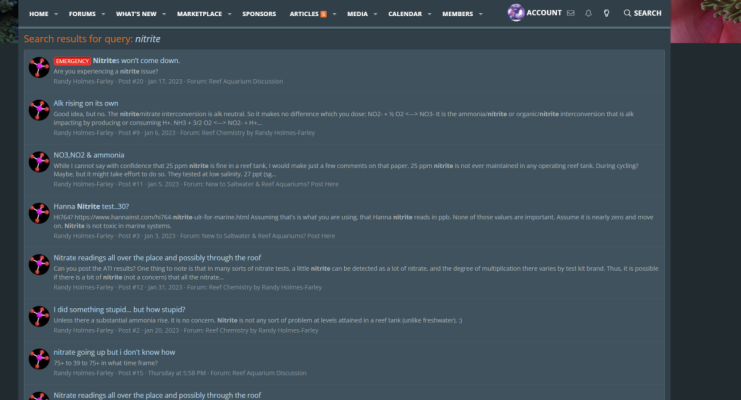Regarding the unfactoring of nitrite in reef tank displays and in reef tank cycles
many readers are wondering right now why I'm typing that.
here's why
go to our search feature. Input in the name field: Randy Holmes-Farley (he's the top reef chemist in the world)
input into the search field "nitrite"
read his collective postings. that's why we're unfactoring nitrite in 2020 and beyond. he told us to stop doing so in 2006 actually lol, we're just slow to listen on the boards.
here's the exact search I just ran:
pick any/all of those threads and read how we don't need to know nitrite anymore in reef tank troubleshoots.

Nitrite in the reef tank article
= we're never going to factor it here.
many readers are wondering right now why I'm typing that.
here's why
go to our search feature. Input in the name field: Randy Holmes-Farley (he's the top reef chemist in the world)
input into the search field "nitrite"
read his collective postings. that's why we're unfactoring nitrite in 2020 and beyond. he told us to stop doing so in 2006 actually lol, we're just slow to listen on the boards.
here's the exact search I just ran:
pick any/all of those threads and read how we don't need to know nitrite anymore in reef tank troubleshoots.

Nitrite in the reef tank article
= we're never going to factor it here.
Last edited:



















